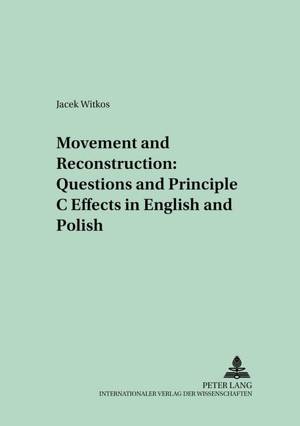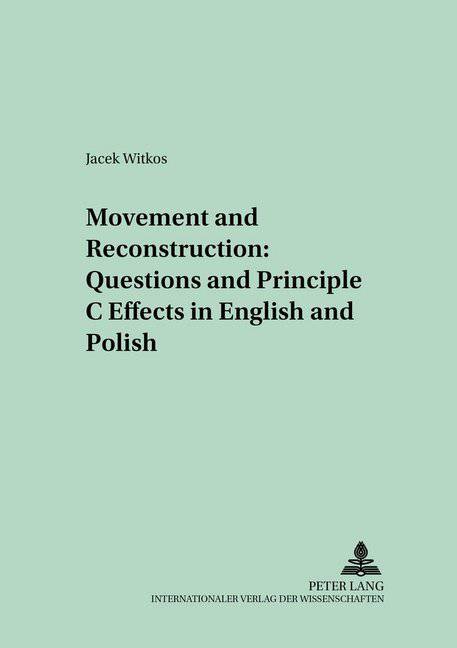
- Afhalen na 1 uur in een winkel met voorraad
- Gratis thuislevering in België vanaf € 30
- Ruim aanbod met 7 miljoen producten
- Afhalen na 1 uur in een winkel met voorraad
- Gratis thuislevering in België vanaf € 30
- Ruim aanbod met 7 miljoen producten
Zoeken
Movement and Reconstruction: Questions and Principle C Effects in English and Polish
Jacek Witkos
€ 83,45
+ 166 punten
Omschrijving
This book addresses an old observation that complex interrogative constituents moved to the left periphery of the clause display dual properties with respect to principles of Chomsky's Binding Theory; in some cases the displaced constituent feeds Principle C while in others it does not. This account of the relationship between syntactic movement and its undoing (Reconstruction) for the purpose of establishing coreference relations involving pied-piped nominal phrases is based on certain refinements of ideas proposed in Lebaux (1988, 1992), Freidin (1986), Chomsky (1993) and Safir (1999). We assume that differences between Reconstruction (feeding of Principle C) and the anti-Reconstruction effects (amelioration of Principle C) result from two processes: the point of introduction of a given category into the phrase marker and vehicle change of Safir (1999). The former factor distinguishes between arguments and adjuncts, while the latter replaces a name embedded in an overtly moved interrogative phrase with its pronominal correlate.
Specificaties
Betrokkenen
- Auteur(s):
- Uitgeverij:
Inhoud
- Aantal bladzijden:
- 326
- Taal:
- Engels
- Reeks:
- Reeksnummer:
- nr. 9
Eigenschappen
- Productcode (EAN):
- 9783631518670
- Verschijningsdatum:
- 3/12/2003
- Uitvoering:
- Paperback
- Formaat:
- Trade paperback (VS)
- Afmetingen:
- 148 mm x 210 mm
- Gewicht:
- 439 g

Alleen bij Standaard Boekhandel
+ 166 punten op je klantenkaart van Standaard Boekhandel
Beoordelingen
We publiceren alleen reviews die voldoen aan de voorwaarden voor reviews. Bekijk onze voorwaarden voor reviews.











